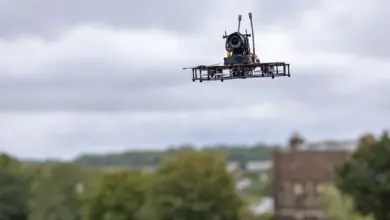
Technology has revolutionized almost every aspect of modern life, and education is no exception. From the introduction of computers in the classroom to the proliferation of online learning platforms, the relationship between technology and education has evolved significantly over the past few decades. This transformation has reshaped traditional teaching methods, broadened access to information, and introduced new ways of learning that transcend geographical boundaries. In this article, we will explore the various ways technology has impacted education, both positively and negatively, as well as the challenges and opportunities it presents for students, educators, and institutions.
The Evolution of Technology in Education
The journey of technology in education can be traced back to the early days of computers in classrooms. In the 1980s, personal computers began to be introduced in schools, providing students with access to basic computing skills. Over time, as the internet became more widely available, the potential for technology in education grew exponentially. By the late 1990s and early 2000s, digital tools such as projectors, interactive whiteboards, and educational software started to become integral parts of the learning environment.
Today, technology is deeply embedded in education systems around the world. The rise of smartphones, tablets, and cloud computing has made learning more accessible and flexible. Platforms such as Google Classroom, Zoom, and Microsoft Teams have enabled remote and hybrid learning models, especially during global events like the COVID-19 pandemic. This rapid shift has led to a more connected and dynamic educational landscape.
Enhanced Access to Information
One of the most significant impacts of technology on education is the unprecedented access to information it provides. In the past, students relied heavily on textbooks and teachers as their primary sources of knowledge. Today, with the internet at their fingertips, students can access a vast array of information from anywhere in the world. This democratization of knowledge has empowered learners to explore subjects in greater depth, access diverse perspectives, and stay up to date with the latest research and developments in their fields of interest.
Educational websites, online libraries, and digital encyclopedias have transformed the way students research and gather information. Moreover, platforms like YouTube, Khan Academy, and Coursera offer free video tutorials and courses on almost any topic imaginable. As a result, learning has become a more personalized experience, allowing students to learn at their own pace and according to their individual needs.
New Learning Methods
Technology has not only changed what students learn but also how they learn. Traditional education, which relied heavily on lectures and textbooks, has been augmented with interactive and multimedia resources. Visual learning tools, such as infographics, animations, and video lessons, have become popular, helping students understand complex concepts more easily. Gamification has also made learning more engaging by incorporating game elements such as points, levels, and rewards into the educational process.
Furthermore, the rise of artificial intelligence (AI) in education has opened up new possibilities for personalized learning. AI-driven platforms can analyze students’ learning habits and performance data to provide customized feedback and suggest tailored learning paths. Adaptive learning systems adjust the difficulty of lessons based on a student’s progress, ensuring they are constantly challenged at an appropriate level.
Virtual reality (VR) and augmented reality (AR) technologies have also made their way into the classroom, offering immersive learning experiences. Students can now explore historical landmarks, conduct scientific experiments, or even visit distant planets—all from the comfort of their classrooms or homes. These technologies help bridge the gap between theoretical knowledge and practical experience, making learning more tangible and memorable.
Online Learning and Distance Education
One of the most transformative impacts of technology on education has been the rise of online learning and distance education. This has been especially significant in higher education, where universities and colleges have embraced e-learning platforms to reach students beyond their physical campuses.
Massive Open Online Courses (MOOCs) have gained widespread popularity, offering courses from prestigious universities to students around the world, often free of charge. Platforms like edX, Coursera, and Udemy provide learners with the opportunity to study subjects ranging from computer science to philosophy, often with the option of earning certificates or even degrees. Online learning has made education more accessible to individuals who may have previously been unable to attend traditional schools due to geographical, financial, or personal constraints.
The flexibility of online learning also allows students to balance their studies with other commitments, such as work or family responsibilities. This has made education more inclusive, particularly for non-traditional students, such as working adults, parents, and those with disabilities.
Challenges and Drawbacks
While the benefits of technology in education are undeniable, it is not without its challenges and drawbacks. One of the most significant concerns is the digital divide—the gap between those who have access to technology and those who do not. In many parts of the world, students lack access to reliable internet connections, computers, or even basic electricity, limiting their ability to benefit from technological advancements in education. This disparity can exacerbate existing inequalities, as students from low-income or rural areas are often left behind.
Another challenge is the over-reliance on technology, which can sometimes hinder the development of critical thinking and problem-solving skills. With easy access to information, students may be less inclined to engage deeply with the material or develop independent research skills. There is also concern that the use of technology in education may lead to a reduction in face-to-face interactions between students and teachers, potentially affecting the development of social and communication skills.
Additionally, the increased use of technology in education raises concerns about privacy and data security. Educational platforms often collect large amounts of data on students’ performance, behavior, and personal information, which can be vulnerable to breaches or misuse. Schools and institutions must prioritize cybersecurity and ensure that students’ data is protected.
The Role of Educators in a Technological World
As technology continues to reshape education, the role of educators has evolved. Teachers are no longer just sources of knowledge but facilitators of learning. They must now guide students in navigating the vast amounts of information available online, teaching them how to critically evaluate sources, synthesize information, and apply what they have learned.
Professional development is also essential for educators to keep up with the latest technological tools and methods. Many teachers have had to learn how to integrate technology into their classrooms effectively, adapting to new platforms and teaching techniques. Ongoing training and support are crucial to ensuring that educators can maximize the potential of technology while maintaining the human element of education.
The Future of Technology in Education
Looking ahead, the future of technology in education holds immense potential. As advancements in AI, VR, and AR continue to develop, we can expect even more innovative ways to enhance learning experiences. The use of AI-powered tutoring systems, predictive analytics, and data-driven insights will likely become more widespread, helping educators tailor their teaching methods to meet the needs of individual students.
In addition, as 5G networks become more widely available, we may see improvements in the quality and accessibility of online education. Faster internet speeds and lower latency will enable smoother video streaming, real-time collaboration, and more immersive virtual experiences.
However, it is essential to address the challenges that come with these advancements. Policymakers, educators, and technology developers must work together to bridge the digital divide, ensure equitable access to technology, and protect students’ privacy.




